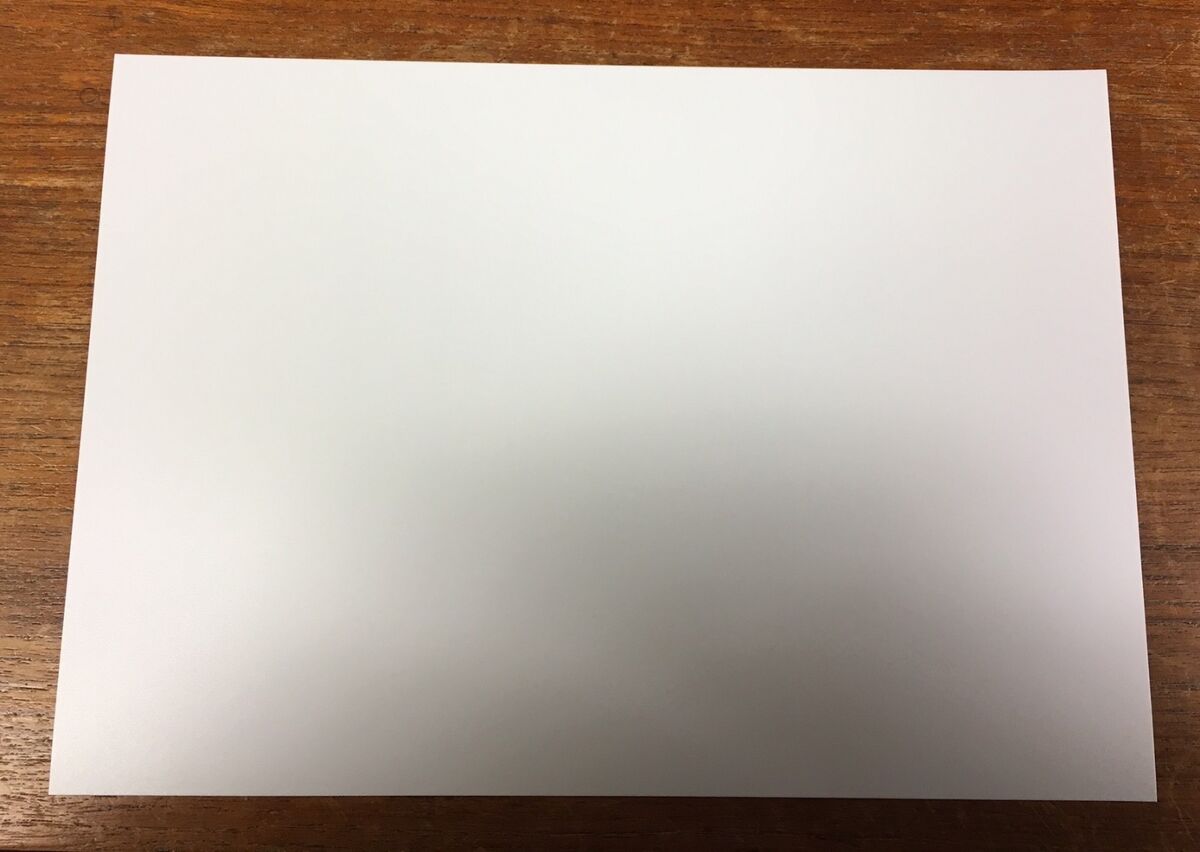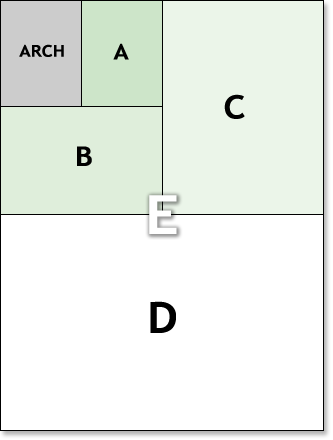The a4 paper size, recognizable globally for its versatility and practicality, holds significant importance in the world of printing, documentation, and communication. This article delves into the history, dimensions, and diverse applications of the A4 paper size, providing essential insights for effective document preparation and management.
A4 Sheet Dimensions in Millimeters: A Comprehensive Guide

The A4 sheet size, a standard widely used for various purposes, is defined by its dimensions in millimeters. Understanding these measurements is crucial for ensuring compatibility and consistency in printing and documentation tasks.
Dimensions of A4 Paper in Millimeters
The A4 paper size measures 210 millimeters in width and 297 millimeters in length. These specific measurements provide a balanced layout that accommodates text, graphics, and images effectively. The compact yet spacious design of the A4 sheet makes it a popular choice for creating documents of different types.
To further illustrate the dimensions of an A4 sheet in millimeters, refer to the table below:
| Dimension | Measurement in Millimeters |
|---|---|
| Width | 210 mm |
| Length | 297 mm |
Benefits of Standardized A4 Dimensions
The standardized dimensions of the A4 sheet size in millimeters offer several advantages. Firstly, consistency in size ensures that documents can be easily exchanged and reproduced without distortion. Additionally, the uniformity of A4 paper simplifies storage and filing processes, making it convenient for organizing large volumes of paperwork.
Practical Applications of A4 Sheet Size in Millimeters
The A4 sheet size in millimeters finds extensive applications across various sectors. From business reports and academic assignments to promotional materials and personal correspondence, the versatility of A4 paper makes it suitable for a wide range of uses. Its compact size and ample writing space make it a preferred choice for everyday printing needs.
Understanding the Standard A4 Sheet Size in Millimeters

The standard A4 sheet size in millimeters plays a crucial role in maintaining consistency and compatibility in printing and document handling processes. By familiarizing oneself with the specifics of this widely adopted paper size, individuals and organizations can streamline their operations and enhance efficiency.
Importance of A4 Sheet Size Standardization
Standardization of paper sizes, such as the A4 format in millimeters, promotes interoperability and ease of use across different devices and systems. Whether printing, copying, or storing documents, having a universally accepted size like A4 ensures seamless communication and workflow continuity.
Evolution of A4 Sheet Size Standard
The A4 paper size standardization can be traced back to the early 20th century when the International Standards Organization (ISO) introduced the ISO 216 standard for paper sizes. The A series, including A4, was developed to provide a logical progression of sizes based on halving the area of the preceding sheet. This systematic approach ensured that each size maintained the same aspect ratio and proportions, facilitating scaling and compatibility.
Benefits of a4 size Standardization
The adoption of the A4 sheet size as a global standard offers numerous benefits to users worldwide. By adhering to a consistent size for documents, businesses, educational institutions, and individuals can minimize errors in formatting and layout. Compatibility with printers, copiers, and filing systems is enhanced, reducing the need for adjustments or resizing. Moreover, the widespread acceptance of A4 promotes efficiency in document exchange and communication on a global scale.
Impact of A4 Standardization on Industry Practices
The prevalence of A4 as the standard paper size in millimeters has influenced industry practices in various sectors. Printers and photocopiers are designed to handle A4 sheets efficiently, leading to optimized printing processes and reduced waste. Additionally, software applications and templates often default to A4 dimensions, simplifying document creation and ensuring consistency across different platforms. The seamless integration of A4 size standards has become integral to modern workflows, contributing to productivity and professionalism in document management.
Converting A4 Sheet Size Measurements from Inches to Millimeters

Understanding the conversion between different units of measurement is essential for international compatibility and accurate dimension representation. Converting A4 sheet size measurements from inches to millimeters enables users to work seamlessly with varying standards and specifications, ensuring precision in document preparation and printing.
Conversion Formula for A4 Sheet Size
When converting A4 sheet size measurements from inches to millimeters, the following formula can be utilized:
- 1 inch = 25.4 millimeters
By applying this conversion factor, the width and length of an A4 sheet originally specified in inches can be accurately translated into millimeters for standardized presentation and usage.
Example Conversion for A4 Sheet Size
Suppose an A4 sheet is described as 8.27 inches in width and 11.69 inches in length. To convert these measurements to millimeters, the following calculations can be performed:
- Width in millimeters: 8.27 inches x 25.4 mm/inch = 210 mm
- Length in millimeters: 11.69 inches x 25.4 mm/inch = 297 mm
By converting the dimensions of the A4 sheet from inches to millimeters, users can ensure coherence with international standards and facilitate seamless document handling across different regions and systems.
Importance of Accurate Measurement Conversion
Accurate conversion of A4 sheet size measurements from inches to millimeters is vital for maintaining consistency and precision in document production. Whether creating digital designs, printing materials, or sharing files globally, adhering to standardized millimeter dimensions ensures clarity and compatibility. Understanding and applying conversion techniques enhance communication and collaboration in a diverse and interconnected world.
Calculating the Area and Perimeter of an A4 Sheet in Millimeters
Determining the area and perimeter of an A4 sheet in millimeters provides valuable insights into the spatial properties of this widely used paper size. By quantifying these dimensions, users can better visualize the layout of documents and optimize their design and printing processes accordingly.
Area Calculation for A4 Sheet
To calculate the area of an A4 sheet in millimeters, the formula for finding the area of a rectangle can be applied:
- Area = Width x Length
For an A4 sheet with dimensions of 210 mm (width) and 297 mm (length), the area calculation would be as follows:
- Area = 210 mm x 297 mm = 62370 sq mm
Therefore, the total area of an A4 sheet in millimeters is 62,370 square millimeters, providing ample space for content creation and layout customization.
Perimeter Calculation for A4 Sheet
The perimeter of an A4 sheet in millimeters can be calculated by adding the measurements of all four sides of the rectangle:
- Perimeter = 2 x (Width + Length)
Using the width and length values of 210 mm and 297 mm, the perimeter calculation would be:
- Perimeter = 2 x (210 mm + 297 mm) = 1004 mm
Thus, the perimeter of an A4 sheet in millimeters is 1004 mm, outlining the boundary of the paper and highlighting its size and proportions effectively.
Significance of Area and Perimeter Calculations
Understanding the area and perimeter of an A4 sheet in millimeters offers practical benefits in document planning and layout optimization. By visualizing the available space and the boundaries of the paper, users can make informed decisions regarding content placement, design elements, and overall document composition. These calculations aid in maximizing the utility of A4 paper for various purposes, ensuring efficient utilization of printing resources and enhancing workflow efficiency.
Aspect Ratio and Proportions of an A4 Sheet in Millimeters
The aspect ratio and proportions of an A4 sheet in millimeters play a crucial role in maintaining consistency and visual harmony in document design and printing. By examining these geometric characteristics, users can create aesthetically pleasing layouts and ensure compatibility with standard printing formats.
Understanding Aspect Ratio for A4 Sheet
The aspect ratio of an A4 sheet refers to the proportional relationship between its width and length. In the case of A4 paper, the aspect ratio is standardized at 1:√2 or approximately 1:1.414, where the length is 1.414 times the width. This consistent ratio ensures that resizing or scaling documents to fit A4 dimensions does not distort the original content and maintains visual integrity.
Importance of Aspect Ratio in Design
The aspect ratio of an A4 sheet in millimeters is significant for graphic designers, artists, and layout professionals who aim to create visually appealing and balanced compositions. By adhering to the 1:1.414 ratio, designers can ensure that images, text, and graphics maintain their intended proportions when printed on A4 paper. Consistency in aspect ratio enhances the readability and aesthetics of documents, contributing to effective communication and presentation.
Examining Proportions of A4 Sheet
The proportions of an A4 sheet in millimeters refer to the relative sizing of its width and length, dictating the spatial arrangement of content on the page. With dimensions of 210 mm (width) and 297 mm (length), the A4 paper size exhibits a harmonious proportion that balances horizontal and vertical orientations. This balanced layout allows for versatile formatting options and accommodates various types of content seamlessly.
Practical Implications of Proportional Design
Designing documents based on the proportions of an A4 sheet in millimeters promotes visual coherence and user engagement. The well-balanced nature of A4 dimensions enables creators to organize information effectively, prioritize key elements, and enhance readability. Whether designing flyers, brochures, or presentations, aligning content with A4 proportions ensures a professional and polished appearance, resonating with audiences and conveying information clearly.
By analyzing the aspect ratio and proportions of an A4 sheet in millimeters, users can leverage these geometric principles to create impactful and visually appealing documents tailored to their specific needs and objectives. The inherent balance and consistency of A4 dimensions offer a versatile canvas for creativity and communication, making it an ideal choice for various printing and design applications.
International Paper Size Standards: A4 Sheet Size in Millimeters
The international paper size standards, particularly the A4 sheet size in millimeters, have played a significant role in promoting global communication, standardization, and interoperability in document handling. Understanding the conventions and specifications of A4 paper enables individuals and organizations to engage effectively in cross-border collaborations and ensure seamless exchange of information.
Evolution of Paper Size Standards
The development of paper size standards can be traced back to historical practices and the need for consistent formats in documentation and printing. Over time, various systems emerged, including the ISO 216 standard introduced by the International Organization for Standardization (ISO). The A series within the ISO 216 standard, with A4 being the most commonly used size, revolutionized the way paper sizes were structured and adopted worldwide. The logical progression of sizes based on halving the area of the previous sheet ensured uniformity and ease of use across different applications.
Global Adoption of A4 Size
The global adoption of the A4 sheet size in millimeters can be attributed to its practicality, versatility, and widespread availability. As the preferred choice for printing documents, letters, forms, and reports, A4 paper has become synonymous with office and administrative tasks globally. Its compatibility with standard filing systems, binders, and printing equipment makes A4 the default option for both personal and professional use, transcending geographical boundaries and cultural differences.
Standard Specifications of A4 Sheet
The standard specifications of an A4 sheet in millimeters adhere to the ISO 216 standard, defining its dimensions and aspect ratio precisely. With a width of 210 mm and a length of 297 mm, the A4 size offers a balanced layout that accommodates various content types effectively. The aspect ratio of 1:√2 ensures that resizing documents or images to fit A4 dimensions maintains visual integrity and proportionality.
Importance of Standardization in Communication
Standardization of paper sizes, such as the A4 format in millimeters, fosters clear communication, efficient document exchange, and streamlined workflows. Whether sharing printed materials, collaborating on projects, or archiving information, adhering to international standards like A4 promotes consistency and reliability. By embracing standardized paper sizes, individuals and organizations can overcome barriers related to incompatible formats, ensuring seamless interactions and enhanced productivity.
The widespread acceptance and recognition of the A4 sheet size in millimeters underscore its importance as a foundational element in modern communication and documentation practices. Embracing international paper size standards facilitates seamless collaboration, promotes operational efficiency, and supports effective information management across diverse settings and contexts.